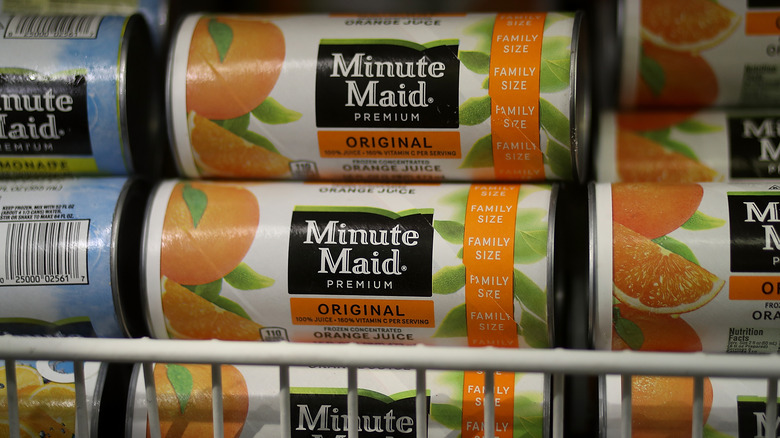How WWII Helped Popularize Frozen Canned Orange Juice Concentrate
Few drinks are as refreshing as a cold glass of orange juice. However, that isn't exclusive to freshly squeezed and bottled juice — canned orange juice concentrate is a staple in many household freezers.
Instead of popping open a bottle of orange juice or squeezing it yourself, frozen orange juice concentrate is just that — 100% orange juice in a concentrated amount, which is then canned and frozen. As the National Museum of American History explains, the can is then thawed, either overnight in the fridge or quickly on a countertop. Once thawed, it's diluted with water, resulting in a cold and just-as-fresh glass of orange juice. While it may be commonly found in most households, that wasn't the case until the 1950s and '60s. Even more than that, like many now popular frozen, canned, and/or packaged foods, it wasn't even invented until the advent of World War II.
The creation of Minute Maid
Frozen canned orange juice concentrate is a convenient, affordable, and quick way to make orange juice. More than that, it's a great way to get your daily dose of vitamin C, which, according to the National Museum of American History, is why it was invented. They explain that soldiers in World War II were in need of a vitamin C source, which originally took the form of lemon crystals.
As Taste of Home explains, researchers in Florida and California tried shipping frozen orange juice in the 1930s, but it wouldn't keep fresh, spoiling by the time it reached its destination. A decade later, scientists managed to remove the liquid from this frozen orange juice, creating frozen orange juice concentrate, which was able to be shipped to soldiers. This led to the creation of both the product and brand Minute Maid, per Coca-Cola Canada. The product was a lot more affordable than fresh squeezed or bottled juice, so it became a household staple once released commercially.

